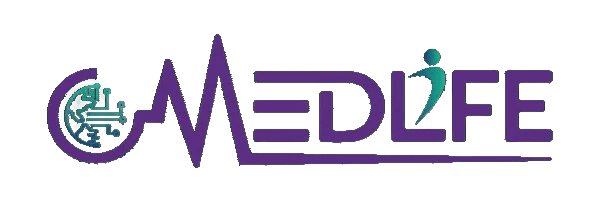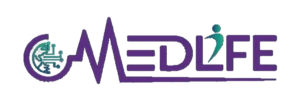Pediatric practices face unique challenges in medical billing that distinguish them from other specialties. From age-specific coding requirements to vaccine administration complexities, the financial management of a pediatric practice demands specialized knowledge, dedicated resources, and constant vigilance.
As healthcare regulations grow increasingly complex and reimbursement models continue to evolve, many pediatric practices are discovering that outsourcing their medical billing operations can transform their practice workflow and financial performance.
Streamlined Claim Submission and Faster Reimbursements
One of the most immediate and impactful benefits of outsourcing pediatric medical billing is the acceleration of the revenue cycle through optimized claim submission processes.
Expedited Claim Processing
Professional billing services typically implement sophisticated workflows that dramatically reduce the time between service delivery and claim submission:
- Same-day or next-day claim submission: While in-house billing departments often batch claims weekly or bi-weekly, professional billing services typically submit claims within 24-48 hours of service.
- Pre-submission claim scrubbing: Advanced validation technology identifies and corrects potential errors before submission, significantly reducing the likelihood of denials and delays.
- Electronic submission to all payers: Comprehensive connectivity ensures claims reach every insurance carrier through their preferred method without manual intervention.
- Real-time eligibility verification: Pre-visit insurance verification ensures claims are submitted with current, accurate coverage information.
Accelerated Payment Cycles
Beyond faster submission, outsourced billing services employ strategies that expedite the entire payment cycle:
- Automated payment posting: Electronic remittance processing eliminates manual entry delays and reduces posting errors.
- Systematic follow-up protocols: Established timelines trigger automatic inquiries on unpaid claims at optimal intervals rather than when staff find time.
- Direct deposit coordination: Electronic fund transfer arrangements with major payers eliminate mail and check processing delays.
- Denial pattern identification: Analytics identify trends in delayed payments, allowing for proactive resolution of systematic issues.
Lower Rejection Rates and Fewer Follow-Ups: The specialized expertise of pediatric billing services directly translates to cleaner claims and a significant reduction in denials and rejections.
Pediatric-Specific Coding Expertise
Professional billing teams bring specialized knowledge that prevents common pediatric coding errors:
- Age-based coding accuracy: Precise application of age-specific preventive care and evaluation codes
- Vaccine administration expertise: Proper coding of both the vaccine product and administration components
- Modifier application: Correct use of modifiers for combination visits and procedures
- Medical necessity documentation: Ensuring clinical documentation supports the services billed
- Payer-specific requirement compliance: Navigating the unique requirements of commercial, Medicaid, and CHIP plans
Proactive Denial Management
When denials do occur, outsourced billing teams implement systematic approaches to resolution:
- Root cause analysis: Identifying the underlying patterns in denials to prevent recurrence
- Prioritized workflow: Addressing denials based on value, age, and likelihood of recovery
- Appeal automation: Standardized, evidence-based appeal processes for common denial types
- Provider documentation coaching: Targeted feedback to improve documentation for frequently denied services
- Payer relationship leverage: Utilizing established payer contacts to resolve complex issues efficiently
Freeing Up In-House Staff for Patient Care
Perhaps the most transformative benefit of outsourcing pediatric billing is how it reorients staff time toward patient care rather than administrative tasks.
Redirected Focus for Clinical Staff
Outsourcing creates opportunities to optimize clinical workflows:
- Reduced documentation burden: When providers aren’t concerned with capturing every billable element, they can focus documentation on clinical relevance.
- Decreased administrative interruptions: Fewer billing questions mean fewer disruptions to clinical workflow.
- Simplified charge capture: Streamlined processes reduce the time providers spend on coding and billing tasks.
- Enhanced care coordination: Staff previously focused on insurance verification can redirect efforts to care management activities.
Front Office Transformation
Administrative staff experience significant workflow improvements:
- Improved check-in experience: Staff can focus on patient greeting and service rather than insurance details.
- Enhanced phone responsiveness: Reduced billing calls allow for better response to appointment and clinical inquiries.
- Expanded patient education: More time for explaining treatment plans and answering questions.
- Proactive appointment management: Resources redirected to reducing no-shows and filling cancellations.
Quantifiable Benefits to Patient Care
Practices report meaningful improvements in key operational metrics:
- Reduced patient wait times by 10-15 minutes on average
- Increased same-day appointment availability
- Improved patient satisfaction scores, particularly regarding front office interaction
- Decreased staff turnover in administrative positions
- Higher provider satisfaction and reduced burnout rates
As one pediatrician put it: “The difference is remarkable. My front desk staff are now focused on making children feel comfortable when they arrive instead of being buried in insurance paperwork. They’re happier, the patients are happier, and I can focus entirely on providing care.”
Real-Time Reporting and Revenue Transparency
Modern billing services provide unprecedented visibility into practice financial performance, transforming data into actionable intelligence.
Comprehensive Financial Analytics
Outsourced billing partners deliver sophisticated reporting tools:
- Daily performance dashboards: Real-time views of charges, payments, adjustments, and key performance indicators
- Provider productivity analysis: Detailed metrics on work RVUs, collections, and payer mix by provider
- Service line profitability reporting: Cost and revenue analysis by procedure and service type
- Payer contract performance tracking: Identification of reimbursement patterns and underpayments
- Accounts receivable aging visualization: Graphical representation of A/R by age and payer
Strategic Decision Support
Enhanced financial visibility empowers better business decisions:
- Data-driven fee schedule negotiations: Armed with detailed reimbursement analysis to maximize contract terms
- Informed staffing decisions: Based on actual patient flow and revenue patterns
- Service expansion planning: Guided by profitability analysis of potential new services
- Marketing effectiveness measurement: Tracking new patient acquisition and payer mix evolution
- Budget forecasting: Using historical patterns to predict future revenue cycles
Compliance and Quality Monitoring
Beyond financial metrics, comprehensive reporting supports:
- Documentation quality assessment: Identifying areas for improvement in clinical recording
- Coding pattern analysis: Ensuring appropriate code distribution and utilization
- Audit readiness evaluation: Proactive identification of compliance risks
- Provider benchmarking: Comparison of individual providers to practice and specialty norms
- Patient demographic trending: Understanding how patient population and payer mix are evolving
Implementation: Keys to a Successful Transition
Transitioning to outsourced billing requires careful planning. A successful implementation typically includes:
- Thorough needs assessment: Documenting current workflows, pain points, and performance metrics
- Detailed implementation timeline: Creating a realistic schedule with clear milestones
- Staff communication plan: Addressing concerns and explaining new roles proactively
- Comprehensive data migration: Ensuring historical claims and patient information transfer correctly
- Workflow redesign: Documenting new processes for charge capture and patient collections
- Training program: Preparing staff for their responsibilities in the new system
- Parallel processing period: Running old and new systems simultaneously during transition
- Performance benchmarking: Establishing clear metrics to evaluate success
For pediatric practices facing the dual challenges of complex billing requirements and the constant pressure to enhance patient care, outsourcing medical billing offers a strategic solution. By leveraging specialized expertise, advanced technology, and economies of scale, outsourcing partners can transform the revenue cycle from an administrative burden into a strategic advantage.
Ready to transform your pediatric practice workflow? Contact our team today for a complimentary practice assessment and discover how our specialized expertise can help your practice thrive.


